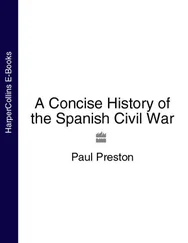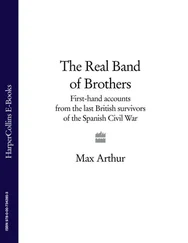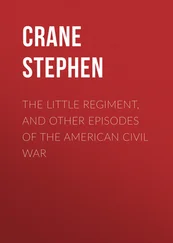In December the UGT called a general strike, which the anarcho-syndicalist CNT did not oppose. Meanwhile Alcalá Zamora became the president of a revolutionary committee, which constituted itself as a government in waiting. University students and workers openly campaigned for the overthrow of the monarchy and a rising, which was planned for 12 December, had to be delayed by three days. Unfortunately, nobody warned Captains Galán and García Hernández of the garrison of Jaca. They rose in revolt at six in the morning, but finding themselves on their own, they had to surrender. Tried for military rebellion, they were executed. This turned them into immediate martyrs of the republican cause. General Emilio Mola, the director-general of security, arrested all the members of the revolutionary committee to be found and the uprising collapsed. But this did little to halt the republican momentum.
In the following month, January 1931, another university strike began, headed by a group known as ‘Al servicio de la República’. It included the principal figures of the Spanish intelligentsia: José Ortega y Gasset, Gregorio Marañón, Ramón Pérez de Ayala and their president, the poet Antonio Machado. On 14 February the king, shaken by the agitation, replaced Berenguer with Admiral Juan Bautista Aznar and gave orders that municipal elections should be called for 12 April. This allowed the republicans to turn the vote into a plebiscite on the monarchy itself. On the evening of 12 April the results began to come in. The socialists and liberal republicans had won almost all the provincial capitals of Spain. The excited crowds packing the centre of Madrid instantly acclaimed the shadow government of Alcalá Zamora as the new government, even though these elections had nothing to do with the Cortes. 11
General Berenguer, who had become minister of war, ordered the army to abide by the will of the people. The Count de Romanones, a member of Admiral Aznar’s government, tried in vain to come to an agreement with the republican committee. He then asked the director of the Civil Guard, General Sanjurjo, if he could count on his force. The offended general took his revenge and answered no. The whole of Madrid became ‘a fiesta of the people which took on the appearance of a revolution’. 12That same evening Admiral Aznar presented the king with his government’s resignation.
At six in the morning of 14 April 1931 the Republic was proclaimed at Eibar and the news spread almost instantaneously throughout Spain. Romanones had a meeting with the republican leader Alcalá Zamora, who told him that the king and his family should leave Spain that very afternoon. The king, who rejected the idea of another minister, that the army should keep him in power, left Madrid to embark at Cartagena. His departure created no disturbances. ‘Well before its collapse,’ wrote Miguel Maura, ‘the monarchy had evaporated in the consciousness of Spaniards.’ 13
On 14 April 1931 the revolutionary committee headed by Niceto Alcalá Zamora, a Catholic and a landowner from Cordoba, converted itself into the provisional government of the Republic. Alcalá Zamora then became president and head of state. 1
These leaders of the Republic faced immense problems deeply rooted in Spanish society: agrarian reform, the intransigence of the armed forces, the Catalan and Basque questions, and the issue of relations between the Catholic Church and the state. They also needed to tackle the deficiencies of the educational system in their objective to create a ‘Republic of citizens’.
The international situation following the Wall Street crash of 1929 was hardly propitious. The world depression did not affect Spain as severely as some of the more industrially developed countries, yet prices for the country’s traditional exports were reduced by nearly half. 2Protests over the fall in living standards and social unrest awoke fears across much of Europe of more revolutions following the one in Russia. This had contributed to the assumption of dictatorial or authoritarian regimes in a number of countries. 3In such a climate the fall of the monarchy in Spain and the proclamation of a republic was unwelcome to the international banking community. Morgan’s Bank immediately cancelled a loan of 60 million dollars agreed with the previous administration.
The new government also inherited the consequences of the economic mistakes made under Primo de Rivera’s dictatorship, the massive debts from public spending projects and the collapse in the value of the peseta. Large amounts of capital had also been transferred abroad in anticipation of increased taxation and a further deterioration of the country’s economy. 4Landowners and industrialists, afraid of the financial effects of the government’s likely social programme, immediately cut investment. These fears were influenced by the appointment of one socialist, Indalecio Prieto, as minister of finance, and another, Largo Caballero, as minister of labour. 5
The government, a coalition from six different parties, proceeded nevertheless to summon the Cortes and draft a constitution for the Second Republic. Throughout April, May and June of 1931 they continued to issue decrees dealing with the question of land reform. These forbade landowners to expel tenants or to hire day labourers from outside their municipality. And they extended employment rights agreed in industry, including the eight-hour day, to agricultural workers. On 21 May the government created the Comisión Técnica Agraria to draft a law, setting up an Institute of Agrarian Reform. It established a programme to resettle between 60,000 and 75,000 families each year, but its budget was only 50 million pesetas, a totally inadequate amount for the task.
The following week the new minister of war, Manuel Azaña, set out to tackle the overmanned military establishment. He offered generals and officers the possibility of passing to the reserve list on full pay. He reduced the sixteen captaincy-generals to eight ‘organic divisions’, suppressed the rank of lieutenant-general, reduced the length of obligatory military service to one year and ordered the closure of the General Military Academy of Saragossa, which happened to be commanded by General Francisco Franco. 6
These reforms did not bring about any substantive improvements in the modernization or efficiency of the army. If anything, it provided disgruntled officers with the time and opportunity to plot against the Republic. The government also made the error of keeping General Sanjurjo in the post of commander of the Civil Guard, a corps which had a notorious reputation for its deadly acts of repression. 7It set up a new paramilitary force, with the unpromising title of Assault Guard. They were known as the asaltos , and tended to be deployed in towns and cities while the Civil Guard policed the countryside.
Catalan autonomy was also high on the list of matters to be addressed. It was a question which greatly concerned old-fashioned Castilian centralists, who saw any concessions to the regions as a threat to the unity of Spain. The April elections had proved a victory for the party of the Catalan left, the Esquerra Republicana de Catalunya, an essentially middle-class organization led by Francesc Macià and Lluís Companys. The two of them had proclaimed on 14 April that a Catalan republic would be established within a federal state. This was not exactly what had been negotiated in the pact of San Sebastián, so three days later three ministers left Madrid for Barcelona to discuss with Macià and Companys the best way forward to enable the Cortes to approve a statute of autonomy. On 21 April Macià was named as president of the Generalitat of Catalonia, the name of the mediaeval Catalan Commonwealth.
The relationship between the new secular Republic and the Catholic Church was unlikely to be simple, with the Concordat of 1851 still in force. No more than fifteen days after the announcement of the Republic, Cardinal Pedro Segura, the primate of Spain, issued a pastoral denouncing the new government’s intention to establish freedom of worship and to separate Church and state. The cardinal urged Catholics to vote in future elections against an administration which in his view wanted to destroy religion. The Catholic press followed his lead. The organ of Acción Católica, El Debate , dedicated itself to defending the privileges of the Church while the monarchist daily, ABC , aligned itself with the most traditionalist positions.
Читать дальше












